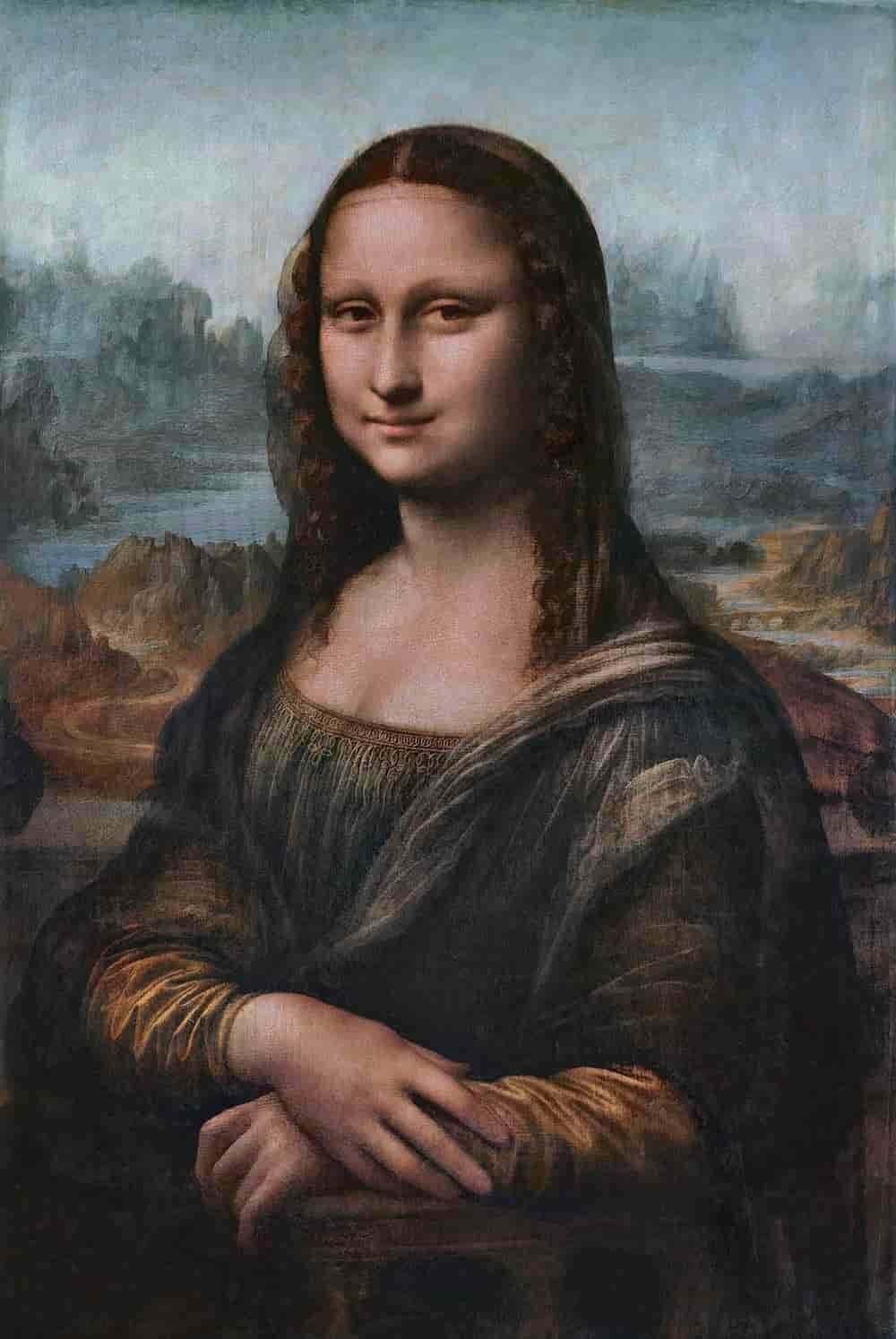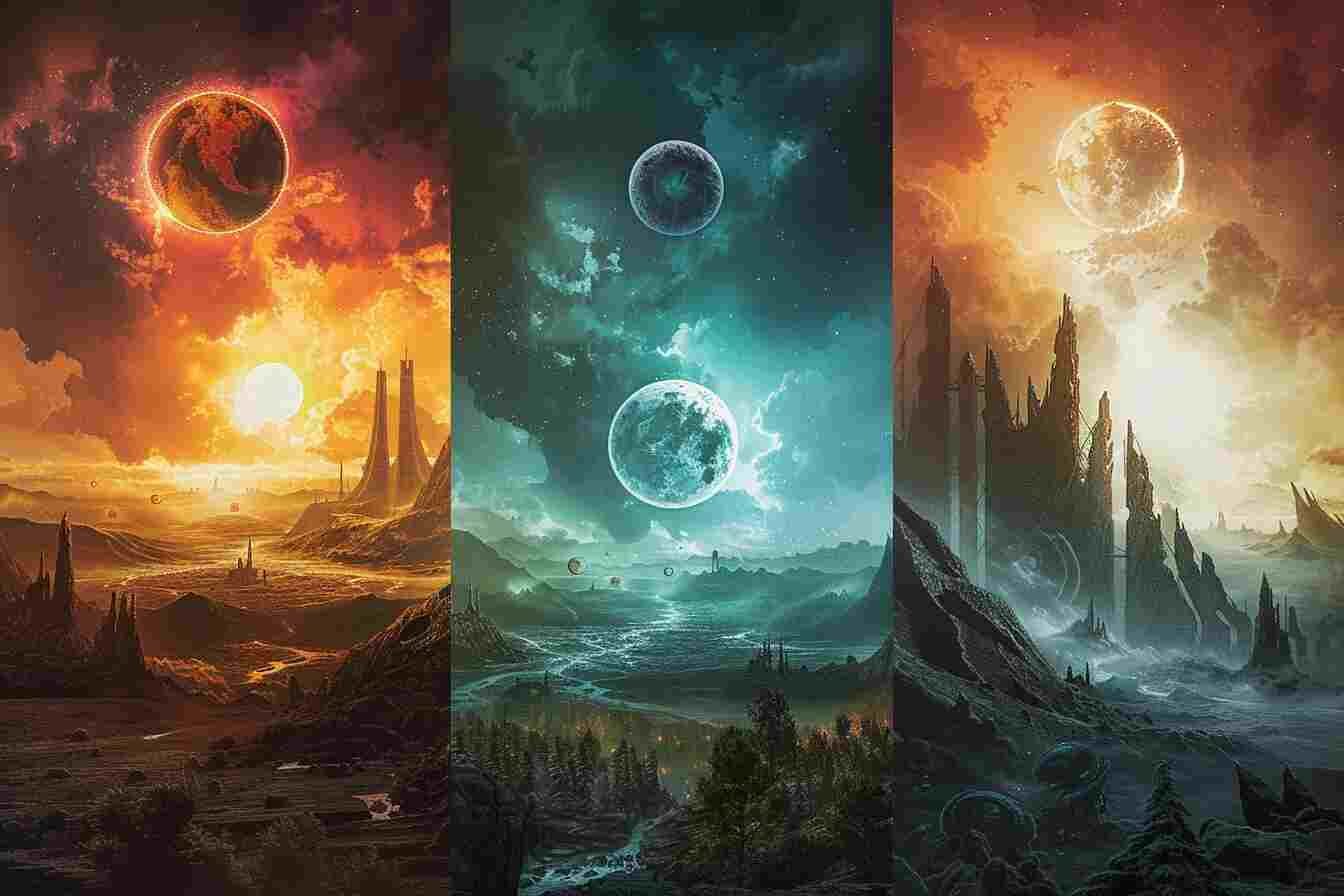10 Most Famous Paintings in the World
Here is a list of the 10 most famous paintings in the world. Since “famous” is a subjective term, cleverlySMART.com turned to Google to see which paintings have topped search results worldwide over the past five years.
Here are the 10 most famous paintings of all time! Every year millions of Dollars are spent by art collectors who want to own the world’s most wanted paintings. However, the most expensive painting is not necessarily the most famous painting. The most famous of all these are generally in the hands of the museum, which is very rarely sold, and therefore literally priceless. Here we provide the 10 most famous paintings in the world.
1. Mona Lisa
Artist: Leonardo da Vinci
Estimated dates: 1503 to 1519
Where to see it: Louvre Museum (Paris)
It’s no surprise that the world’s most famous painting is of a mysterious woman with an enigmatic smile. But that’s one of the few certainties about this work of art.
The woman in the painting is thought to be Lisa Gherardini, wife of the Florence merchant Francesco del Giocondo, but experts aren’t sure. It does represent innovation in art – it is the earliest known Italian portrait to focus so closely on the nanny in the half-length portrait, according to the Louvre, where the painting was first installed in 1804.
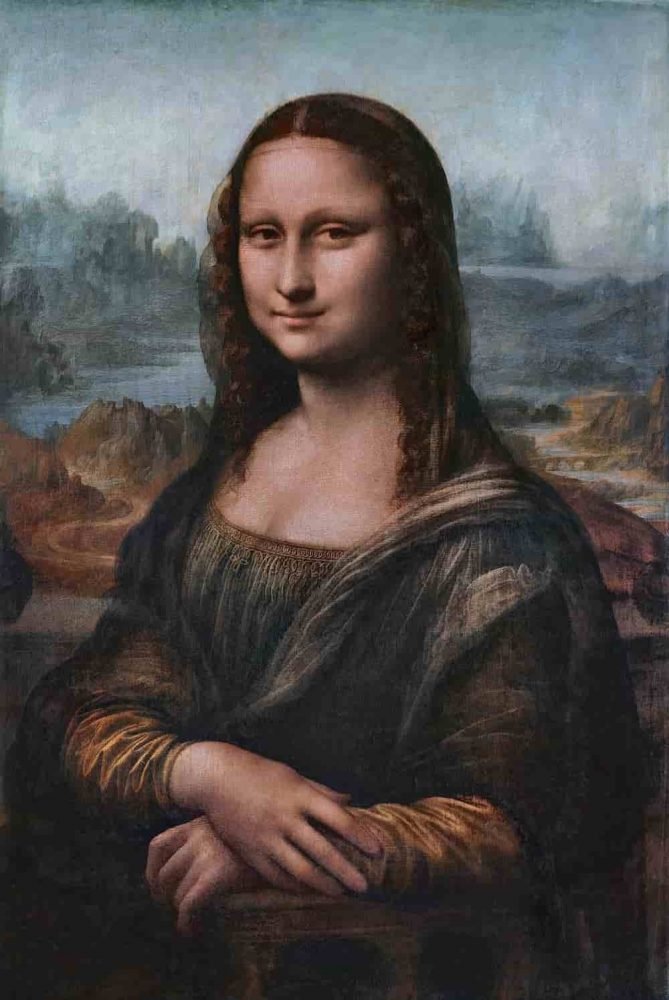
Do you know?
Prior to the 20th century, historians say the “Mona Lisa” was little known outside the art scene. But in 1911, a former Louvre employee stole the portrait and hid it for two years. The theft has helped solidify the painting’s place in popular culture ever since and exposed millions of people to Renaissance art.
It holds significant historical importance as a prime example of Italian Renaissance art and has been one of the most discussed, studied, and reproduced paintings in history. The enigmatic face of Monalisa has captured the attention and inspired many for centuries, often regarded as a symbol of mystery and eternal beauty.
2. The Last Supper
Artist: Leonardo da Vinci
Estimated dates: 1495 to 1498
Where to see it: Santa Maria delle Grazie (Milan, Italy). Leonardo’s Last Supper is located in the original dining room of the former Dominican convent that belongs to the Church of Santa Maria delle Grazie, and more precisely in the refectory of the convent. It is one of the most famous works in the world.
Leonardo da Vinci, the real “Renaissance Man”, is the only artist to appear on this list twice.
Painted in an era where religious imagery is still the dominant artistic theme, “The Last Supper” depicts the last time Jesus broke bread with his disciples before his crucifixion.
The painting is actually a large fresco – 4.6 meters (15 feet) high and 8.8 meters (28.9 feet) wide, which makes for an unforgettable view.
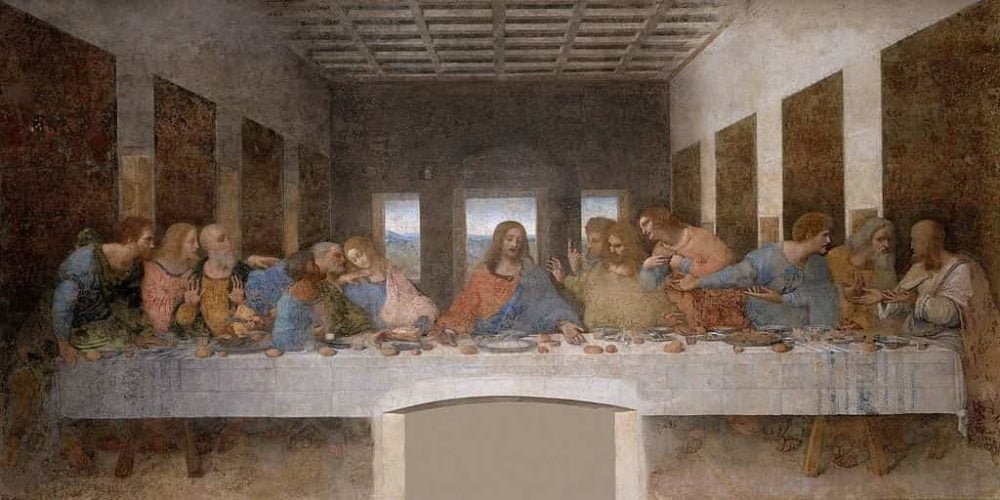
Do you know?
The painting survived two wartime threats – Napoleon’s troops used the wall of the dining room where it was painted as target practice. It was also exposed to air for several years when bombings during World War II destroyed the roof of the Dominican monastery of Santa Maria delle Grazie in Milan.
The painting depicts a crucial moment in the New Testament, where Jesus Christ announces that one of his twelve disciples will betray him. It holds historical significance as one of the most important achievements in Italian Renaissance mural art and as a religious artwork depicting a pivotal moment in the life of Jesus Christ.
3. The Starry Night
Artist: Vincent Van Gogh
Date: 1889
Where to see it: Museum of Modern Art (New York City)
Relatively abstract painting is a signature example of van Gogh’s innovative and bold use of thick brushstrokes. The painting’s striking blues and yellows and the swirling atmosphere have intrigued art lovers for decades.
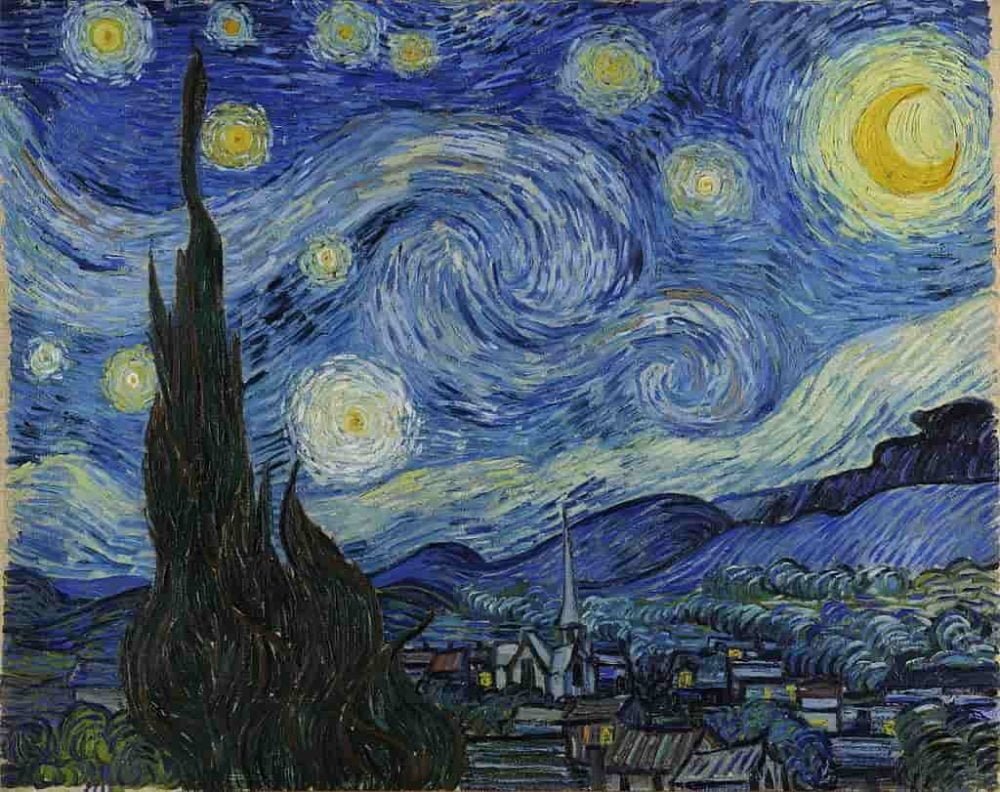
Do you know?
Van Gogh was living in a mental hospital in Saint-Rémy, France, being treated for mental illness, when he painted “The Starry Night.” He was inspired by the view from his bedroom window.
The painting depicts a dramatic night sky above the town of Saint-Rémy-de-Provence in France. It holds historical significance as a prime example of expressionist style and innovative use of color and movement in painting. Van Gogh himself is also a highly influential figure in the development of modern art.
4. The Scream
Artist: Edvard Munch When: 1893 Where to see it: National Museum (Oslo, Norway – opens in 2020) and Munch Museum (Oslo – until May 2020) First things first – “The Scream” is not a work of art.
According to the British Museum blog, there were two paintings, two pastels, and then an unspecified number of prints. The paintings are in the National Museum and the Munch Museum, and in 2012, one of the pastels sold for nearly $ 120 million at auction.
As with the “Mona Lisa” case, the online theft (1994 and 2004) of the two versions of the painting “The Scream” helped raise public awareness of the artwork. (The two of them were finally found).
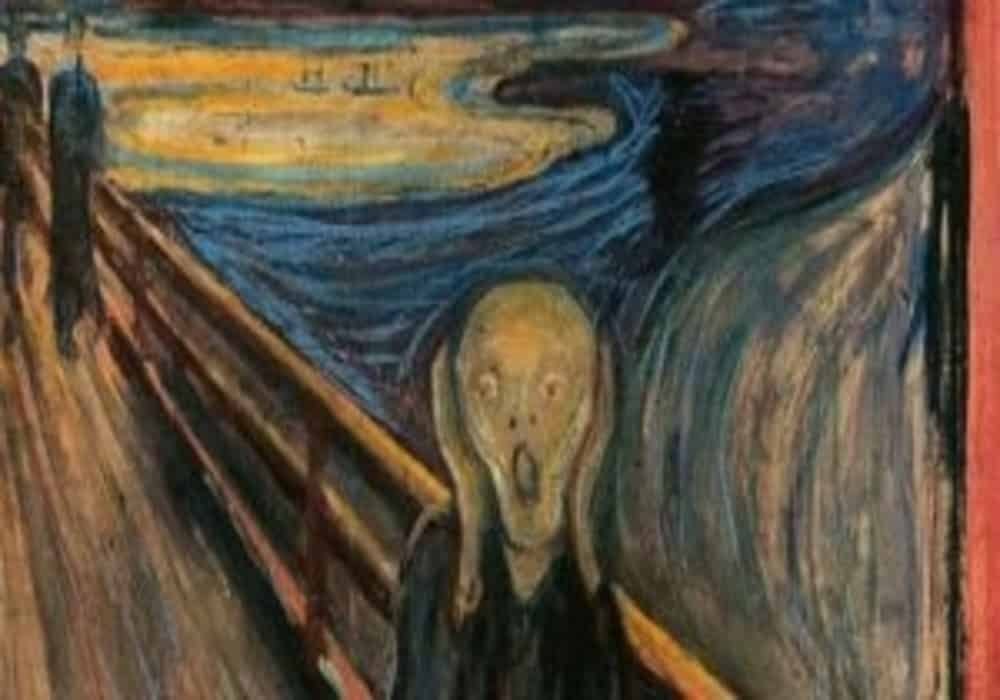
Do you know?
This androgynous figure at the forefront of this Art Nouveau-style painting does not generate screams but tries to block the sharp screams that come from nature. It was inspired by the real-life experience Munch had during her sunset stroll in Oslo when the dramatic blush flooded her senses.
The work depicts a figure screaming amid a terrifying and eerie landscape. It is often interpreted as an expression of anxiety, fear, or discomfort in modern society. “The Scream” holds historical significance as a symbol of expressionism and modern art exploring emotional and psychological themes.
Baca juga ? Lukisan Ekspresionis: The Scream Edvard Munch “Jeritan”
5. Guernica
Artist: Pablo Picasso
Date: 1937
Where to see it: Museo Reina Sofía (Madrid)
This is the newest painting on this list, and it depicts the German aerial bombing of the Basque city of Guernica during the Spanish Civil War. The painting has a distinct Picasso style, and its tireless examination of the horrors of war made it an important part of 20th century culture and history.
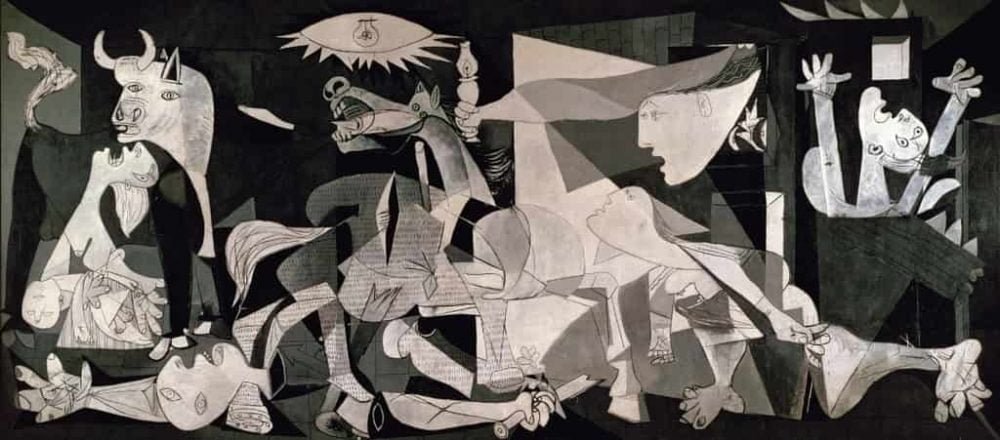
The famous painting “Guernica” by Pablo Picasso. Photo source: Wikimedia Commons
Do you know?
“Guernica” was moved to the Metropolitan Museum of Modern Art in New York during World War II for safekeeping. Picasso requested that the stay be extended until democracy returns to Spain. Finally returned to Madrid in 1981, six years after the death of the old Spanish dictator General Francisco Franco.
The painting is Picasso’s critique of the brutality and cruelty of war, as well as an expression of solidarity with the victims of war. “Guernica” holds great historical significance as a symbol of resistance against political violence and the role of art in protesting social and political injustices.
6. The Kiss
Artist: Gustav Klimt
Estimated dates: 1907 to 1908
Where to see it: The Upper Belvedere Museum (Vienna, Austria)
With No. 6, we moved from the study of hate to the study of love with Gustav Klimt’s “Der Kuss” or “The Kiss”. From Klimt’s “Golden Period”, Byzantine artistic influence can be seen in the highly decorative robes worn by passionate life-size couples.
The Upper Belvedere says that with “Kiss”, Klimt made “general allegorical statements about love at the heart of human existence.” Given its magnetic appeal, people seem to agree.
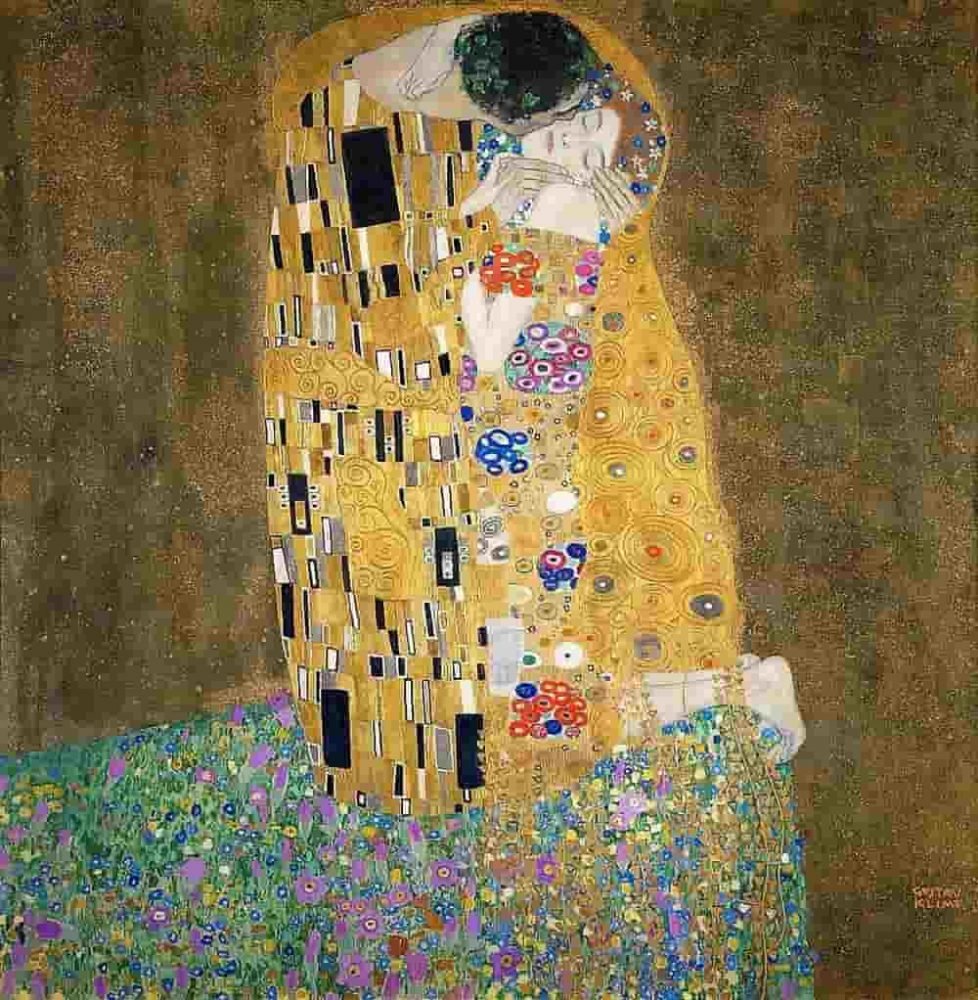
Wikimedia Commons
Do you know?
While “The Kiss” was not for sale, other works from Klimt were bought and sold at a very high price. Oprah Winfrey released the 1907 artwork “Portrait of Adele Bloch-Bauer II” for US $ 150 million in 2016 – for a profit of US $ 60 million.
This painting depicts a couple in an intimate embrace, adorned with gold ornaments and decorative motifs typical of Klimt’s style. It holds historical significance as a prime example of decorative art reflecting luxury and sensuality in the early 20th century.
7. Girl With a Pearl Earing
Artist: Johannes Vermeer
Estimated date: 1665
Where to see it: Mauritshuis (The Hague, Netherlands)
One of the most famous and attractive paintings in the world is often compared to the “Mona Lisa”. Despite the stylistic differences, technically “Girl With a Pearl Earring” is not a portrait, but “tronie” – the Dutch word for a painting of an imaginary figure with exaggerated features. The oil artwork on canvas is brilliant in its simplicity.
The girl – wearing a blue and gold turban and large pearl earrings – was the main focus with only a dark background behind her.

Do you know?
While the Mauritshuis family underwent renovations from 2012 to 2014, “Girl With a Pearl Earring” toured the United States, Italy, and Japan. It attracts large crowds, further cementing its status as one of the most famous works of art in the world.
Though the identity of the girl in the painting is not definitively known, the work has become a symbol of elegance and mystery over the centuries. It holds historical significance as a prime example of genre painting in 17th-century Dutch art, showcasing Vermeer’s skill in capturing expression and detail.
8. The Birth of Venus
Artist: Sandro Botticelli
Estimated date: 1485
Where to see it: Le Gallerie Degli Uffizi (Florence, Italy)
The oldest painting in the top 10 and competing with “The Kiss” for the most sensual, “The Birth of Venus” was probably ordered by a member of the wealthy and art-loving Medici family, who ruled Florence and the surrounding area for centuries.
Marrying a renewed interest in classical Greek culture in the Early Renaissance style, Botticelli created an unforgettable figure with the Goddess of Love emerging from the shell of a large seashell.
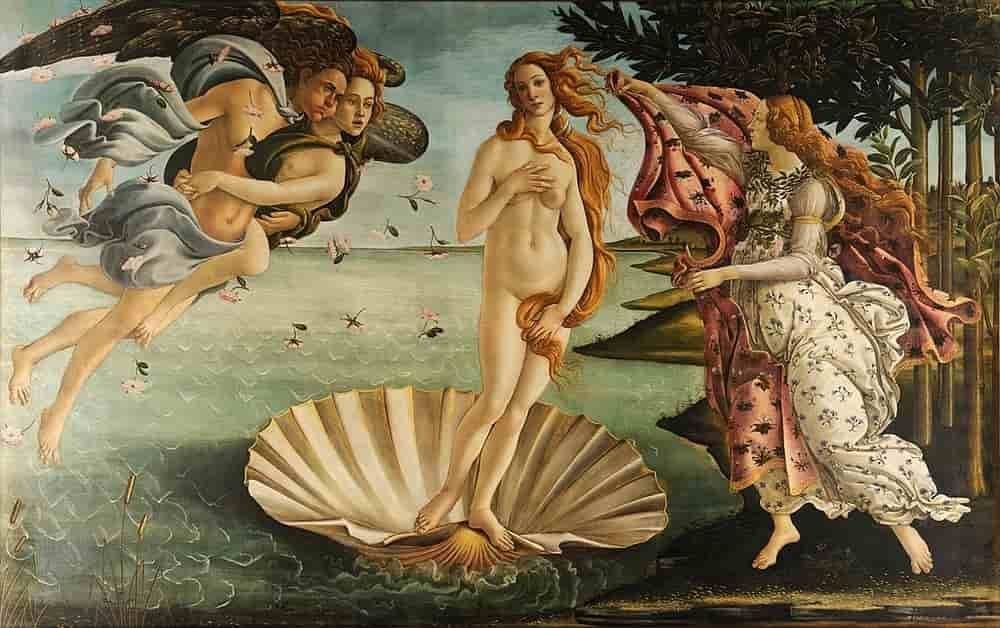
Wikimedia Commons
In Roman mythology, Venus was the goddess of love, beauty, sex, and fertility. She was the Roman counterpart to the Greek Aphrodite. However, Roman Venus had many abilities beyond the Greek Aphrodite; she was a goddess of victory, fertility, and even prostitution.
Do you know?
Botticelli’s “Venus” features two significant deviations from most of his contemporaries. First, he painted on canvas instead of the more popular wood. Second, nudity is rare these days – so Venus is boldly open about her long, loose hair and hands (barely) covering her most intimate parts of her body.
The painting depicts the goddess Venus being born from the sea, surrounded by other gods and angels. It holds great historical significance as a prime example of classical mythology in Renaissance art and features the idealized beauty of the human form typical of the period.
9. Las Meninas (Ladies-in-waiting or The Maids of Honour)
Artist: Diego Velázquez
Date: 1656
Where to see it: Museo del Prado (Madrid)
Madrid is the only city in this collection where you will find two of the 10 most famous paintings, the first of which is “Guernica” at No. 5 and “Las Maninas” here at No. 9.
Set in the popular (and vast) Prado, “Las Meninas” is not only Diego Velázquez’s most famous painting, but also one of his greatest paintings. The complexity of the work has fascinated art critics and the public for centuries. The painting doubles as a portrait.
It serves as a group portrait of the Spanish royal family, but also a portrait of Velázquez himself at work (at left).
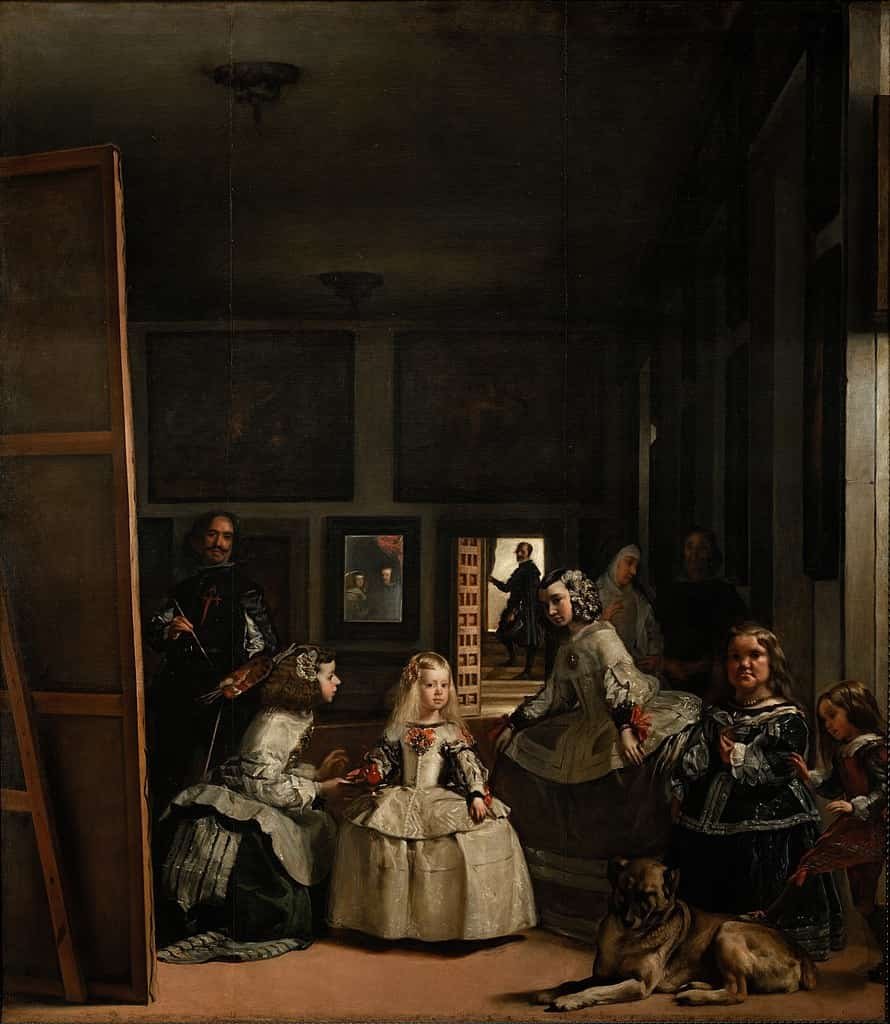
Do you know?
“Las Meninas” was commissioned by King Philip IV of Spain, who ruled from 1621 to 1665. It stayed in the royal palace until 1819, when it went to Prado.
The painting depicts a complex palace scene with various characters, including the painter himself painting this very picture. It holds historical significance as a prime example of metaphysical art and a profound understanding of image and reality in painting.
10. Creation of Adam (Penciptaan Adam)
Artist: Michelangelo
Dates: 1508 to 1512
Where to see it: Sistine Chapel (Vatican City)
The most famous work of renowned artist Michelangelo covers the ceiling of the Sistine Chapel – you have to look up to see it. The scene depicts God and Adam with outstretched arms, their fingers almost touching.
This is one of the most replicated images in history. Adam’s muscular build reveals another talent for Michelangelo – his “David” is perhaps the most famous sculpture in the world. You can see the towering marble sculptures at the Galleria dell’Accademia in Florence.

Do you know?
The ceiling of the Sistine Chapel has been dulled by centuries of exposure to the smoke of the use of candles as lighting, among many other things. After a long, extensive cleaning that ended in 1989, people were surprised to see the bright colors Michelangelo originally used.
The painting depicts the iconic moment when God creates Adam, often regarded as one of the most significant moments in Christian religious history. “Creation of Adam” holds great historical significance as one of the greatest achievements in Italian Renaissance art and as an important symbol in Christian belief about the creation of humanity by God.
Sources: PinterPandai, Culture Trip, Biography Online, CNN, 10 Most Today, BrushWiz
